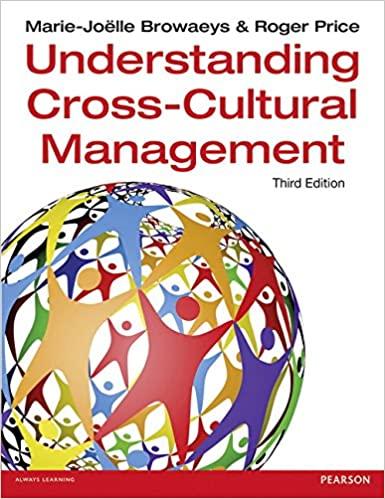Question
Covid-19 Communication Management in Spain: Exploring the Effect of Information-seeking Behavior and Message Reception in Public's Evaluation In 2020, the world is experiencing the worst
Covid-19 Communication Management in Spain: Exploring the Effect of Information-seeking Behavior and Message Reception in Public's Evaluation
In 2020, the world is experiencing the worst health crisis since 1918, caused by a new coronavirus (SARS-CoV-2). Covid-19 first made its appearance in China on December 31, 2019 and spread quickly to South Korea, Iran, Italy, and across Europe, arriving in Spain on January 31st when a German tourist tested positive in the Canary Islands. The day before, the World Health Organization (WHO) had declared the 2019-nCoV outbreak a public health emergency of international concern under the International Health Regulations (IHR). On March 13th, the Prime Minister of Spain, Pedro Snchez, announced a nationwide State of Alarm, banning all trips that were not force majeure and confining the population to their homes to flatten the curve and contain the epidemic.
By May 26th, there had been 26,834 deaths and 235,400 infections in Spain (Ministerio de Sanidad, 2020), making it second the country with the highest number of coronavirus deaths relative to its population (Saura, 2020). The unexpected emergence and rapid spread of the virus triggered government officials' efforts to provide information about the rate of transmission, the best means of containment, treatment, the de-escalation process, and so on. However, despite the task force daily briefings, numerous press conferences, and speeches by members of the government, the management of communication has been widely questioned by professional organizations (FAPE, 2020 RSF, 2020) and experts in political communication (Gonzlez-Harbour, 2020). The main criticisms have to do with the delay in offering information, the lack of consistent and sufficient data, as well as the lack of clarity and empathy on the part of the Prime Minister. These communication mistakes have negatively affected the government's approval ratings (Costa-Snchez Lpez-Garca, 2020 Crespo Garrido, 2020). In this exceptional situation, the consumption of information immensely increased, particularly news related to the evolution of the outbreak (Edelman, 2020 WHO, 2020). Active communicative behaviors in information[1]seeking serve as essential coping mechanisms in the face of crisis information exposure (Austin Liu Jin, 2012 Zhao Zhan Liu, 2018 Zhu Anagondahalli Zhang, 2017). The impact of information sources is especially important during crisis times because of the potentially dramatic consequences that may arise as a result of how the public understands and frame the crisis (Van-der-Meer, 2018). According to the WHO, "The capacity to relay information quickly and clearly on different media platforms (television, radio, print, web), [...] is essential to the effective management of a public-health emergency" (2011, p. 116).
In risk and crisis communication, channel selection and trustworthiness are important predictors of information processing and, hopefully, adherence to recommended preventative behaviors (Park Boatwright Johnson-Avery, 2019). Despite a number of warnings from the scientific community (GPMB, 2019) and the lessons learned from previous infectious disease emergencies, including the 2002 SARS-CoV, 2009 H1N1 influenza pandemic, MERS-CoV, Ebola virus, and Zika virus outbreaks, governments around the world have shown low capacities to respond effectively to health emergency outbreaks.
Question 1 (25 Marks) Suppose you were employed to assist in the development and description of an effective communication management plan for a health district in Spain, what would be your key considerations.
Assess the communication management in Spain (5 marks)
Define communication management plan in Spain. (6 marks)
Identify all 14 key considerations for an effective communication management plan. (1 mark each)
Question 2 (25 Marks) Suppose you were to discuss the importance of communication amongst the various stakeholders to develop a suitable communication strategy for internal communication within the health department in Spain. Critically discuss the dimenisons that you would have selected and substantiate your answer.
Discuss the importance of communication Mention the seven (7) dimensions and discuss each of them. (1 Mark for each of the dimension & 2 for description)
Question 3 (25 Marks) Discuss the three categories of communication and the methods that stakeholders use to share communication amongst themselves to meet their communication needs within their own communication management plans.
Discuss the three (3) categories (5 Marks each) and
list the five (5) methods that can be used (2 Mark each)
Question 4 (25 Marks) Discuss the concept of communication and the type of communication that must be done in Spain.
In your answer please indicate the following as the background to answering the above question.
How were communications carried out amongst the people of Spain
A discussion on the types of communication failures and the impacts thereof on the people of Spain about the pandemic
Through which means was communication carried out in Spain and lastly a number of infections that plagued the global communities from whom lessons could have been learnt on how to communicate effectively
Step by Step Solution
There are 3 Steps involved in it
Step: 1
Question 1 Assess the communication management in Spain 5 marks The communication management in Spain during the Covid19 crisis faced several challenges There were criticisms regarding the delay in pr...
Get Instant Access to Expert-Tailored Solutions
See step-by-step solutions with expert insights and AI powered tools for academic success
Step: 2

Step: 3

Ace Your Homework with AI
Get the answers you need in no time with our AI-driven, step-by-step assistance
Get Started


